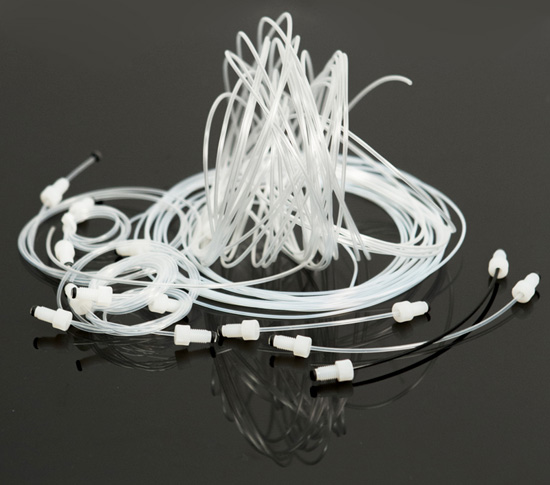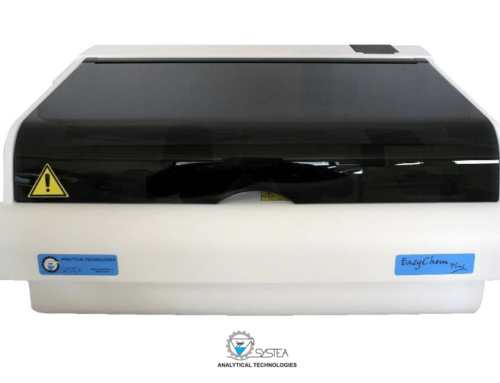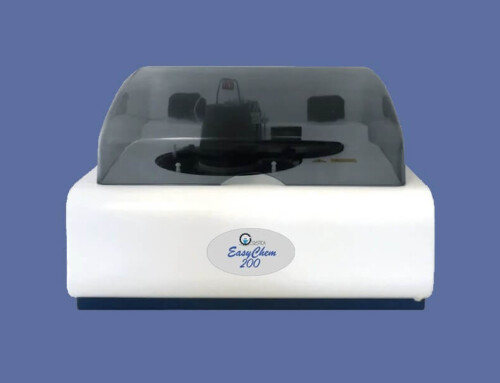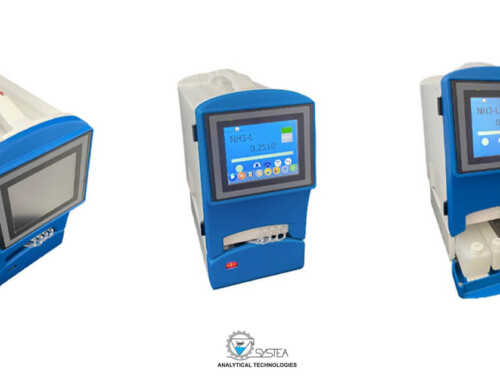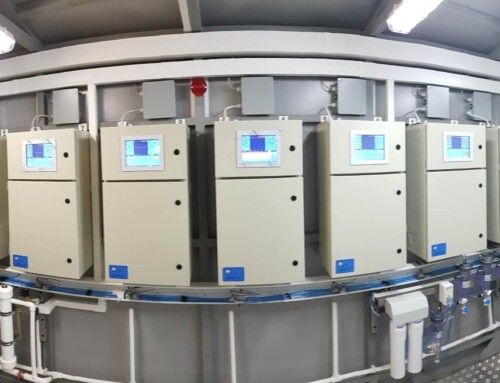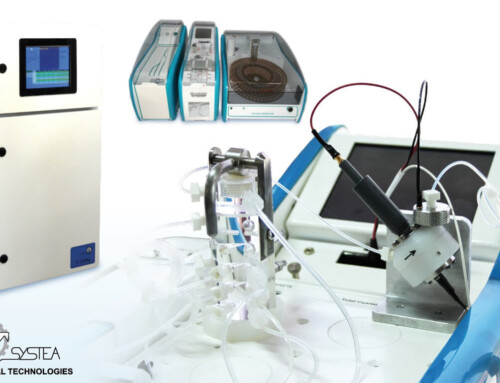– And the Science behind It
Years ago when I started working with autoanalyzers, glass was the most common material used to transport and mix fluids and I dutifully learned the art of working with very expensive and easily snapped fragile mixing coils and glass fittings. At the time I was told that glass had the best properties of all the materials and in my sincere inexperience, I accepted that.
Over time, like all operators that have to work with glass, I became very frustrated dealing with its tendency to break, its short life, since it was so susceptible to chemicals damaging the inner path exposed to acids and bases and of course, its high cost which was something I could never accept.
In those days, Alpkem was transitioning from the glass RFA cartridges to the Perstorp FIA platform which used primarily Teflon. I distinctly remember being told by all of the old school, Alpkem gurus that glass was far superior to all other tubing for low level phosphate and most other chemistries, but I never heard the facts; just the opinions. I later found out that there is no valid basis for this opinion and that it was probably based more on the fact that some instrument platforms use glass and are invested in it; not because glass is the best material to transport the many strong and heated chemicals used for flow analysis.
The other problem with glass is that you must make all kinds of annoying sleeves to connect the glass ends to transmission tubing. I learned all the ratios of tubing to get the large purple/purple tubing over the large outer diameter of the glass fitting to the very small diameter of the tubing. This is, of course, where the fittings get broken most of the time. In addition, the sleeves are terrible for flow dynamics due to the inconsistency of the connections as the sample flows through the cartridge.
Once I gained confidence that glass was NOT the best material, I would simply change out a cartridge of glass to the Teflon flanged fittings of the Perstorp Tecator platform and every time would immediately solve flow issues and produce much better peak shape and reproducibility. I realize there are still a few manufacturers that are invested in glass and even some laboratories that believe low level phosphate analysis must be done on glass for the best results, but I challenge anyone to compare the results of a glass system to a flanged Teflon system if there is any lingering doubt.
We often take a cartridge from Astoria Pacific (all glass) and simply change out their analytical glass cartridge to flanged Teflon tubing, leaving everything else and in every single case the lab never goes back to glass since it is easier to perform maintenance, gives better results and is significantly less expensive. We also replace their heaters, which are glass, with Teflon wrapped heaters and always see significant improvement in flow dynamics, longevity, peak shape and reproducibility.
Below is the technical information detailing Teflon’s material advantage over glass. This information supports the experience I’ve had in many labs and what I have seen experimentally over the years. It is taken directly from http://en.wikipedia.org/wiki/Polytetrafluoroethylene.
Now that you see why we love Teflon so much over glass, please take some time to look at a past blog that discusses the advantages of flanged fittings. The combination of teflon and flanged fittings will save your lab considerable time and expense as well as producing far superior results over any other tubing and fittings.
Thank you!
Technical Information:
“Polytetrafluoroethylene (PTFE) is a synthetic fluoropolymer of tetrafluoroethylene that has numerous applications. The best known brand name of PTFE-based formulas is Teflon by DuPont Co., who discovered the compound.
PTFE is a fluorocarbon solid, as it is a high-molecular-weight compound consisting wholly of carbon and fluorine. PTFE is hydrophobic: neither water nor water-containing substances wet PTFE, as fluorocarbons demonstrate mitigated London dispersion forces due to the high electronegativity of fluorine. PTFE has one of the lowest coefficients of friction against any solid.
PTFE is a thermoplastic polymer, which is a white solid at room temperature, with a density of about 2200 kg/m3. According to DuPont, its melting point is 600 K (327 °C; 620 °F). The following sites detail various physical properties – amongst many you will see both glass and teflon. Please check out these tables for the facts: http://www.engineersedge.com/coeffients_of_friction.htm http://hypertextbook.com/facts/2004/GarvinTam.shtml Below is the table about Teflon that was shown in the main article being cited here:
The coefficient of friction of plastics is usually measured against polished steel.[24] PTFE’s coefficient of friction is 0.05 to 0.10,[18] which is the third-lowest of any known solid material (BAM being the first, with a coefficient of friction of 0.02; diamond-like carbon being second-lowest at 0.05). PTFE’s resistance to van der Waals forces means that it is the only known surface to which a gecko cannot stick.[25] In fact, PTFE can be used to prevent insects climbing up surfaces painted with the material. PTFE is so slippery that insects cannot get a grip and tend to fall off. For example, PTFE is used to prevent ants climbing out of formicaria. Because of its chemical inertness, PTFE cannot be cross-linked like an elastomer. Therefore, it has no “memory” and is subject to creep. Because of its superior chemical and thermal properties, PTFE is often used as a gasket material. Another major application is in fuel and hydraulic lines, due to PTFE’s low resistance against flowing liquids. Colder temperatures at high altitudes cause these fluids to flow more slowly. Coating the lines’s interior surfaces with low-resistance PTFE helps to compensate by allowing the liquids to move more easily.[17]” Now that you see why we love teflon so much over glass please take some time to look at a past blog that discusses the advantages of flanged fittings. The combination of teflon and flanged fittings will save your lab considerable time, expense as well as producing far superior results over any other tubing and fittings.
Property
Value
Density
2200 kg/m3
Melting point
600 K
Thermal expansion
135 · 10−6 K−1 [21]
Thermal diffusivity
0.124 mm²/s [22]
Young’s modulus
0.5 GPa
Yield strength
23 MPa
Bulk resistivity
1016 Ω·m [23]
Coefficient of friction
0.05–0.10
Dielectric constant
ε=2.1,tan(δ)<5(-4)
Dielectric constant (60 Hz)
ε=2.1,tan(δ)<2(-4)
Dielectric strength (1 MHz)
60 MV/m
Thank you!


